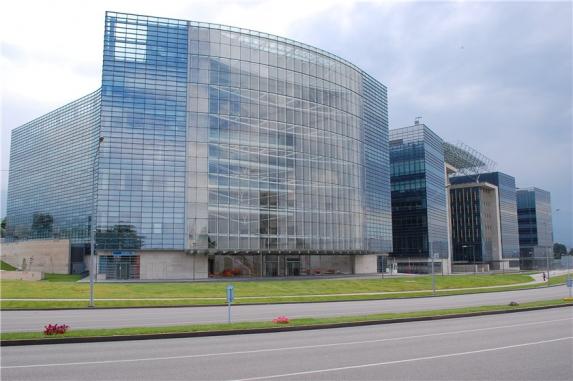
Re-Privatization of Kazakhstani Banks to Ensure Protection From Customs Union Competition
Publication: Eurasia Daily Monitor Volume: 11 Issue: 12
By:

On January 17, Kazakhstan’s President Nursultan Nazarbayev made his traditional address to the nation, unveiling the key aspects of this year’s government agenda. While most of his speech was dedicated to the implementation of the “Kazakhstan 2050 strategy,” an ambitious program aiming to catapult the country among the world’s top 30 economies, the president also briefly spoke about forthcoming reforms in the Kazakhstani financial sector. Thus, the government is henceforth in charge of elaborating, by June 1, a comprehensive national strategy for the development of the financial sector up to 2030 (Official website of Kazakhstan’s president, January 17).
Despite the traditionally strong focus of Kazakhstani authorities on such issues as economic diversification, energy savings, innovation, and the development of agriculture, the country’s banking sector remains one of the truly strategic fields of the domestic economy. It is also the one headed for the deepest reforms in the next few years. Last December, Kazakhstan’s biggest bank, Kazkommertsbank, made public its intention to acquire in cooperation with Kenes Rakishev, the son-in-law of the current mayor of Astana, Imangali Tasmagambetov, another major financial institution—BTA Bank (Tengrinews.kz, December 23, 2013).
In February 2009, BTA was bailed out by Kazakhstan’s sovereign wealth fund, Samruk Kazyna, which currently owns over 97 percent of its shares. Later, the bank lived through two complex restructuring programs enabling the reduction of its outstanding debt from $16.65 billion before September 2010 to some $3.3 billion in late 2012. Although BTA was subsequently recapitalized to the tune of over $10 billion, mostly due to generous aid packages offered by Samruk Kazyna, it has proven so far largely unable either to recover from its earlier ailments or to restore the trust of foreign lenders (Bta.kz, December 24, 2012; September 1, 2010; Banker.kz, February 4, 2009).
In January–June 2013, BTA posted a net profit of over $100 million, following several troubled years marred by unchecked operating expenses and poor management. However, the share of overdue loans in the bank’s overall loan portfolio still exceeded 83 percent as of September 2013, and the declared earnings have mostly been made possible by the extension of loan repayment periods as a result of the two debt restructurings. After last summer’s arrest of BTA’s former chairman, Mukhtar Ablyazov, accused of large-scale fraud in his home country, the bank now expects to recover from $5 billion to $6 billion worth of embezzled assets. Yet, it remains to be seen whether such expectations can be attained in the context where several other countries, including Russia and Ukraine, have been seeking the compensation of damages caused by Ablyazov’s fraudulent actions (nationalbank.kz, September 1, 2013; Kapital.kz, August 27, 2013; Forbes.kz, July 31, 2013).
As regards Kazkommertsbank, which is currently slated to fully absorb BTA and therefore become Kazakhstan’s supergiant bank in terms of total assets under management, its own financial health is far from robust. The bank’s loan portfolio has steadily included over 30 percent of overdue loans and its owned capital dropped by 28 percent between September 2012 and September 2013. Last year, the bank reportedly repaid some $950 million worth of financial assistance (out of the total $1.9 billion) offered by the state in the wake of the global economic crisis. However, Kazkommertsbank still counts amongst its shareholders Samruk Kazyna (21.26 percent) whose complete and definitive withdrawal is presently scheduled for November 2014. This process may actually take more time to execute, however, given the uncertainty surrounding the recently announced purchase of BTA (Kkb.kz, December 1, 2013; Kapital.kz, November 22, 2013; Forbes.kz, July 31, 2013).
Kazakhstan’s government is also actively disengaging from two other debt-ridden banks that earlier fell victim to the 2008–2009 financial turmoil: Alliance Bank and Temir Bank. Last November, Bulat Utemuratov, one of the country’s few billionaires and President Nazarbayev’s former advisor, agreed to buy Samruk Kazyna’s 79.9-percent share in Temir Bank. He also plans to secure control of its 16-percent share in Alliance Bank, whereas Samruk Kazyna’s current stake in this bank has amounted to 67 percent since May 2010. Thus, Kazakhstan’s sovereign wealth fund, which has been steadily providing life insurance to the country’s embattled banking industry, is set to retain its shareholder status in at least two problem banks in the short and, eventually, medium term. Its future interventions to offer additional liquidity in the form of preferential loans or low-interest deposits cannot be ruled out, since the domestic banking sector has yet to recover its losses (Lsm.kz, November 20, 2013).
In any case, Samruk Kazyna has already failed to exit the above four banks before the start of 2014, despite President Nazarbayev’s clear instructions to the contrary last February. While the Kazakhstani government still expects that its withdrawal from private banks will ultimately succeed, the current trend toward aggrandizement may prove dangerous in the longer term. Moreover, most major banks are progressively handed over to powerful financial groups closely tied with Kazakhstan’s ruling political circles. The Halyk Bank has been controlled for years by President Nazarbayev’s middle daughter, Dinara, and her husband Timur Kulibayev; Kazkommertsbank is in the hands of several industrial groups; Alliance and Temir are now drifting into Bulat Utemuratov’s ownership (News.nur.kz, February 4, 2013).
Earlier last year, ATF Bank (controlled by Utemuratov before June 2007) was sold to Galymzhan Yessenov, the son-in-law of the Almaty mayor who also happens to be Nursultan Nazarbayev’s nephew. By some accounts, this strategy may pursue not only economic but also political purposes. With the establishment of the trilateral Customs Union and the future Eurasian Economic Union after 2015, Russian banks are becoming particularly aggressive and have used rapid expansion tactics in neighboring Kazakhstan. While the government is no longer capable of ensuring the survival and relative independence of troubled banks with budget funding, it is increasingly divesting itself of such onerous duties and transferring them to influential private owners (Diapazon.kz, March 16, 2013; Nomad.su, June 21, 2007).




